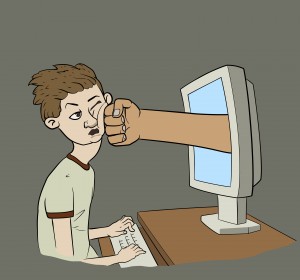 A few years ago, the most common way for young teenagers to socialise was by gathering in adult-free groups in homes, clubs or even on street corners to engage in the normal rituals of chatting and gossiping, flirting and experimenting with relationships. This was all part of the normal ritual of growing up, discovering one’s identity and learning how to fit in.
A few years ago, the most common way for young teenagers to socialise was by gathering in adult-free groups in homes, clubs or even on street corners to engage in the normal rituals of chatting and gossiping, flirting and experimenting with relationships. This was all part of the normal ritual of growing up, discovering one’s identity and learning how to fit in.
Whereas parents might have worried about the safety of their children in these groups, simple safety measures such as ensuring you knew who was in the group, being collected to and from etc, would make it a safe experience for everyone.
With the advent of social media and the internet, these teenage gatherings have moved online, and virtual meeting points such as Facebook or Snapchat have replaced the street corner.
The attraction to social media and the internet for adolescents and children is completely understandable – it provides them with a powerful forum to communicate that does not depend on geography and which allows them to constantly stay in touch.
Online they can chat, flirt and gossip in the normal way and they can experiment by text and images,with how they want to be identified and how they can attract other young people.
Whereas parents might have thought that their child was safe in the home, once they are online they are in a potentially more dangerous place than the street corner.
Well documented is the problem of cyberbullying, unique to the online world where people can be more disinhibited and cruel and where hurtful messages and images can be distributed and witnessed by a huge number.
Also, it turns out that many teenage forums online aren’t adult-free and paedophiles masquerading as 14-year-olds can easily join. The Prime Time programme highlights that even without teenagers being approached online, their relatively innocent images can be exploited and distributed by predators online.
This should be a further wake up call to all parents and teenagers about the dangers of the online world.
We need to respond by being more protective, insisting on more legal measures to enforce privacy and by restricting unsupervised online access for young teenagers.
We also need to respond with better education for parents and teenagers about the online world – people should think before they post an image, realising it can’t ever be withdrawn and could be reproduced and used by anyone.
Dr. John Sharry, Irish Times Newspaper, December 2014.
John writes in The Irish Times Health+ every Tuesday.
www.solutiontalk.ie
